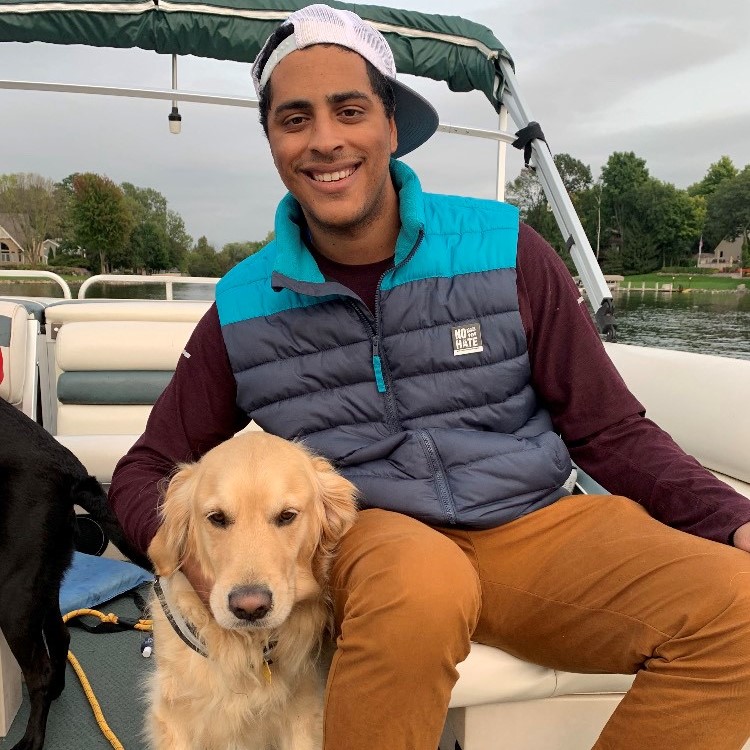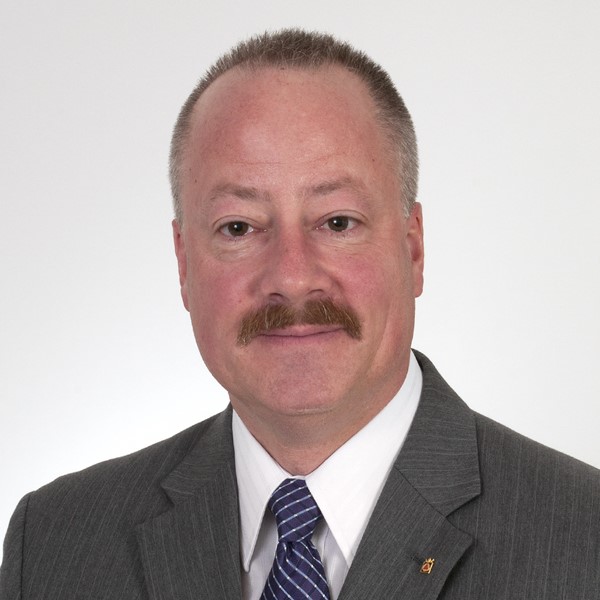|
Session B4.1
FDOT's MR-MICCI - A Case Study on Interagency Coordination, Challenges and Solutions for South Florida Passenger Rail Capacity Improvements
Courtney Arena
4:00 – 4:30 PM ET
| About the Presentation |
|
The Florida Department of Transportation (FDOT) District Four, in partnership with the South Florida Regional Transportation Authority (SFRTA) is in the design and permitting phase of the Miami River-Miami Intermodal Center Capacity Improvement (MR-MICCI) project. This project serves a 72-mile corridor for the Tri-Rail system that has 18 stations and an average daily ridership of 15,000 through Palm Beach, Broward, and Miami-Dade counties.The MR-MICCI project will complete the double-tracking of the remaining 1.25 miles of this rail corridor to the southern terminus at the Miami Intermodal Center (MIC) which connects to local transportation services including Metrorail and the Miami International Airport. The completion of the additional mainline track will address an existing capacity deficiency along the system that negatively impacts travel time and schedule adherence for both passenger (Tri-Rail and Amtrak) and freight (CSX) trains.To accommodate the double-tracking, the project will replace an existing historic bascule bridge over the Miami River (C-6) Canal with new twin single-track fixed bridges. Also, necessary improvements and upgrades are needed for the historic Hialeah Market Tri-Rail Station. The Miami River is a tidally influenced navigable waterway under the jurisdiction of the US Coast Guard, the US Army Corps of Engineers, and the South Florida Water Management District (SFWMD). In December 2020, the US Congress approved the deauthorization of the federal navigation rights for this portion of the Miami River.
This presentation will focus on the approach to the project from the Planning and NEPA phases with FTA as the lead federal agency.We will: (1) Identify the main issues with the evaluation of impacts to Section 106 historic resources, Section 4(f) resources, water resources, navigable waterways and riparian rights; and (2) describe the solutions developed during the Project Development & Environmental (PD&E), Design, and permitting phases through interagency coordination and with a variety of stakeholders, including federal, state, and local agencies, regulatory agencies, private/commercial property owners, multiple transportation agencies, and local governments. The session will also provide information on the mitigation commitments that were developed to compensate for unavoidable impacts. We will share lessons learned on the approach to simplify and streamline a potentially complicated project permitting process including a US Coast Guard Bridge Permit, EPA coordination for the Biscayne Sole Source Aquifer, US Army Corps Section 404/408 authorizations, SFWMD Environmental Resource and right of way permitting, and local permitting requirements with Miami-Dade County.
|
| About the Speaker(s) |
|
 Courtney Arena Courtney Arena
Principal Environmental Scientist
Gannett Fleming, Inc.
Courtney Arena is a Principal Environmental Scientist with Gannett Fleming and is based out of South Florida. She has 22 years of experience leading a variety of environmental services for water resources and transportation infrastructure engineering projects. Her experience includes NEPA documentation and natural resource assessments. Her project experience includes working with the FDOT, US Army Corps of Engineers, Natural Resource Conservation Service, and the South Florida Water Management District. Her expertise extends to ecosystem restoration and regulatory permitting with federal, state, and local agencies. Courtney has also served as a NAEP At-Large Board member since 2010 and she earned her M.S. degree locally from Nova Southeastern University's Oceanographic Center.
 Alex Marks Alex Marks
Environmental Specialist
Florida Department of Transportation, District Four
Alex Marks is an Environmental Specialist with FDOT’s District 4, based out of Ft. Lauderdale. A scientist and marine biologist by trade, having earned his M.S. degree locally from Nova Southeastern University, he has eight years of professional experience. His current responsibilities include ensuring construction projects comply with local, state, and federal laws. Specifically, he has experience in NEPA documentation, including drafting environmental impact reviews and natural resource evaluations. He is very knowledgeable on Florida’s flora and fauna and actively coordinates with local, state, and federal agencies so projects either avoid environmental impacts or mitigate them.
|
Session B4.2
Sustainable Mass Transit
Thomas Abdallah, LEED AP, PE
4:30 – 5:00 PM ET
| About the Presentation |
| Mass Transit is the most sustainable solution for cities to combat the effects of global climate change, limit pollution, and reduce the use of fossil fuels. Many cities that have a mass transportation network move millions of people from place to place and more specifically back and forth to work each day, and take millions of people out of their cars, and into trains, light rail, or buses for their daily commute. Mass transportation helps the world by reducing emissions that pollute the air and increase the greenhouse gasses in the atmosphere. The presentation will examine numerous sustainability initiatives including energy efficiency and storage, renewable energy, green infrastructure, materials conservation, and ecological conservation. |
| About the Speaker |
|
Thomas Abdallah, P.E. LEED AP
Chief Environmental Engineer
MTA Construction and Development Agencies
Thomas is the Chief Environmental Engineer for MTA Construction and Development Agencies. Mr. Abdallah is also an Adjunct Professor in Columbia University’s Sustainability Management graduate program and has over 35 years’ experience in the environmental engineering and transportation field. Thomas is the author of “Sustainable Mass Transit: Challenges and Opportunities in Urban Public Transportation” The book looks at different types of public mass transit systems, including heavy and light rail systems, and bus networks. The book closely examines the sustainability elements and environmental mitigation measures that reduce or eliminate negative environmental impacts in operations, design and capital construction projects. Thomas has appeared on Discovery Channel, PBS, NPR and appeared in an episode of History Channel’s Modern Marvels – Moving America.
|
Session B4.3
Fostering Understanding when Project Owners are from Two Different Countries
Bill Plumpton, CPE, ENV, SP
5:00 – 5:30 PM ET
| About the Presentation |
|
Developing a new or replacing an existing international border crossing between the U.S. and Canada, including Port of Entries (i.e., border stations) in both countries, is a unique and potentially complex undertaking for project owners. In Canada, the project owners with responsibility for the undertaking and most frequently involved are the Provincial Department of Transportation and Infrastructure, Transport Canada, the Canada Border Services Agency, Canada Revenue Agency, and Citizenship and Immigration Canada. In the U.S., the project owners with responsibility for the undertaking and most frequently involved are the state Department of Transportation, the Federal Highway Administration, U.S. General Services Administration, and the U.S. Customs and Border Protection.
While the Provincial and State Departments of Transportation engage each other frequently over shared border issues, developing a new or replacing an existing international crossing between the U.S. and Canada is not a common occurrence and, consequently, these agencies generally do not know each other's project development processes and requirements for environmental compliance. The difficulty in developing a new or replacing an existing international crossing increases when it is over a shared boundary waterway. To comply with the Federal and Provincial- and state-specific regulations and requirements governing the consideration and protection of the environment, the planning, design, construction, operation, and maintenance for a new international border crossing involves many agencies from both countries, many of which are not regular participants in the development of transportation projects. Often several offices of the same federal agency are involved in the process. In one recent project, more than 75 different agencies with direct or indirect jurisdiction by law were involved. Many of these agencies' requirements are either not widely published or well known. While the Provincial and state Departments of Transportation and others may have project development processes that are similar at a high-level, dramatic differences can exist particularly when engaging the public and other local stakeholders, and compromise and consistency in both actions and messaging are required. To help project owners close gaps in understanding and differences in environmental impact assessment processes to deliver a new or replace an existing international crossing between the two countries, a wide range of tools and techniques can be used.
This presentation will discuss the tools and techniques that have been used with success to deliver new and replacement international border crossings between the two countries. The tools and techniques to be presented have been developed over more than 20 years of delivering new and replacement international border crossings between the two countries. While developing an international border crossing is a rare occurrence, these tools and techniques can be scaled and modified for use on other projects that cross political boundaries or involve widely divergent constituents and audiences.
|
| About the Speaker |
|
 Bill Plumpton, CEP, ENV SP Bill Plumpton, CEP, ENV SP
Senior Vice President
Gannett Fleming, Inc.
Bill is a Chief Environmental Scientist with Gannett Fleming and has provided NEPA compliance and documentation services for a wide range of lead federal agencies and actions across the country. For more than 20 years, he has assisted project owners, in both the U.S. and Canada, with the planning, design, permitting, and construction of new and replacement international border crossings between the two countries. He has a B.S. in Environmental Resource Management from the Pennsylvania State University. He is a Certified Environmental Profession with the Academy of Board-Certified Environmental Professionals and serves on its certification review board. He is a long-time and active member of NAEP and has served on the board of directors as both an at-large member and as a Chapter Representative.
|
Back to Schedule
MTA Construction and Development Agencies
|

 Courtney Arena
Courtney Arena Alex Marks
Alex Marks Bill Plumpton, CEP, ENV SP
Bill Plumpton, CEP, ENV SP

